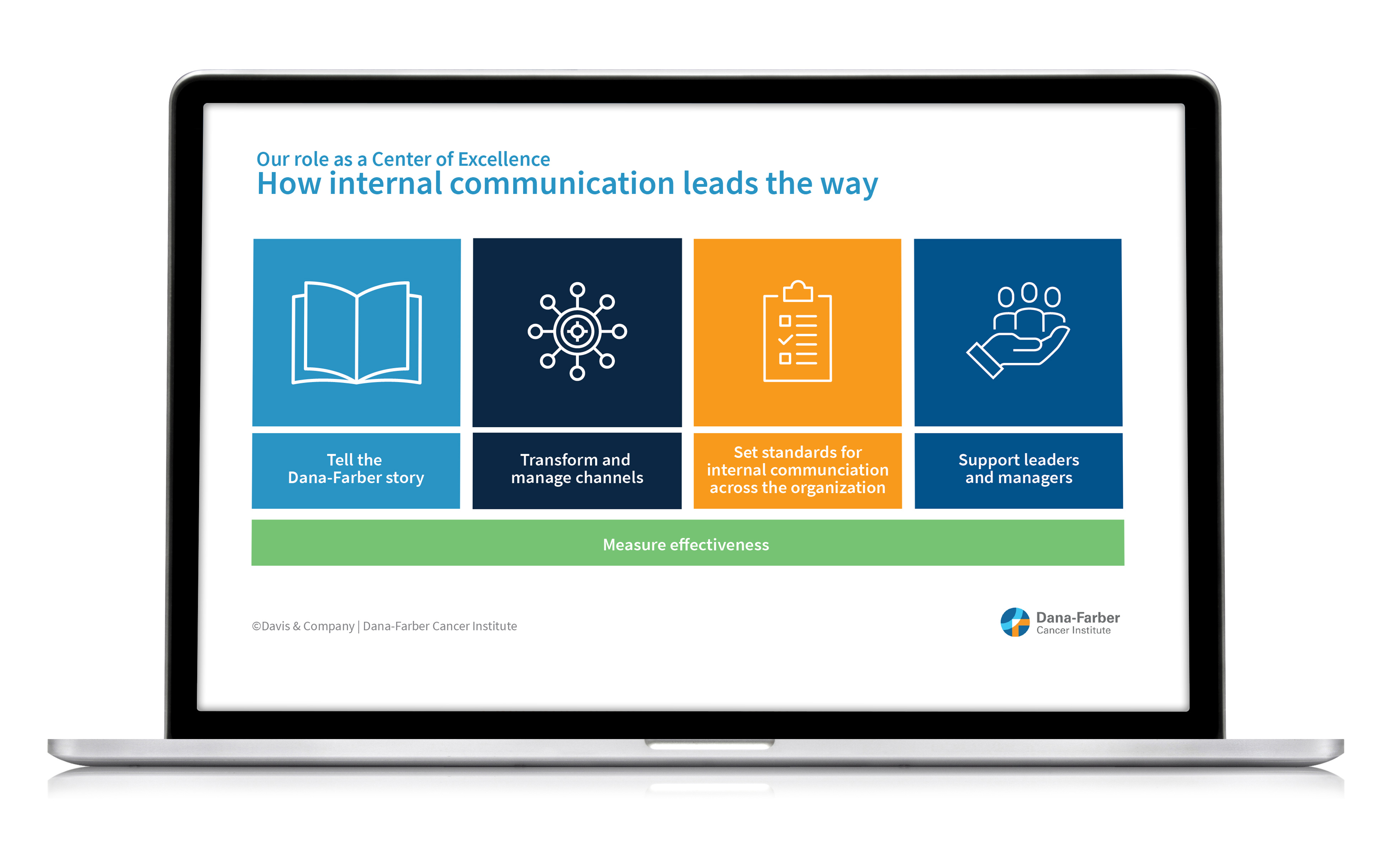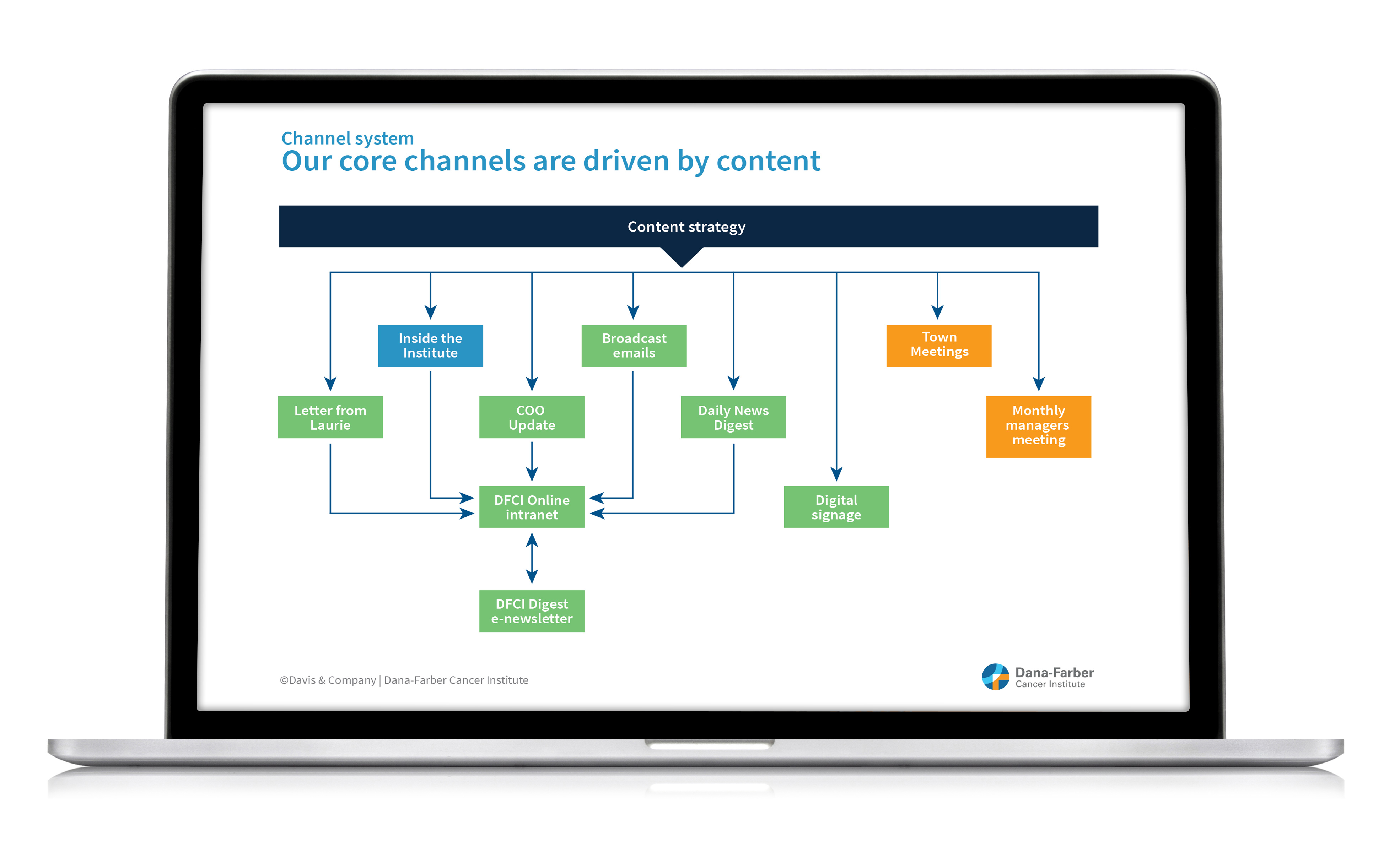|
We support internal communication teams—helping them organize, strategize and build skills. We also work with business functions to improve the way they communicate.
Design thinking and implementation
|
Case study: Creating an internal communication Center of Excellence
Dana-Farber Cancer Institute is a nonprofit comprehensive cancer treatment and research center in Boston, Massachusetts.
While the Communication team manages a few key channels, several functions and departments developed their own—signaling that internal communication was not meeting all needs. Additionally, anecdotal feedback suggested that “communication across functions and departments needed improvement.”
The Communication team set out to determine the best strategy—structure, resources and system—to enhance communication and better meet employees’ and the Institute’s needs.
Davis & Company came on board to develop a balanced view of the current state and design an improved communication system.
Conducting a robust communication audit
Before we could make informed recommendations, we needed a complete picture of internal communication. We conducted a communication audit, which included:
- Interviews with key stakeholders to understand needs and preferences
- A channel assessment to determine whether existing channels met industry standards, such as employee-centric content and easy-to-use tools

Creating a new and improved communication system
We started with a five-hour, on-site workshop with the Dana-Farber Communication team, where we presented findings from the audit report, shared leading practices, and facilitated brainstorming exercises and planning discussions.
Then, we used the output from the workshop to develop an improved communication strategy, including:
- A clear purpose and objectives for the Communication team
- How to position the team as a communication Center of Excellence designed to set standards and lead collaboration across the Institute
- A content strategy founded on the Institute’s mission and employees’ needs
- A refined channel system to eliminate email overload and leverage the intranet as an information hub
- Channel standards and guidelines to ensure consistency across the team and the Institute
- A robust strategy to support leader and manager communication: training leaders about their communication role, providing communication tools and supporting key channels, such as all-staff town halls and leader blogs
- A measurement plan to continually assess effectiveness and make regular improvements as needed

The result?
Our collaborative approach helped the team achieve its objective of understanding and refining its communication strategy. The team was now armed with a clear definition of its role and strategies to support stakeholders while modeling best practices in internal communication.

